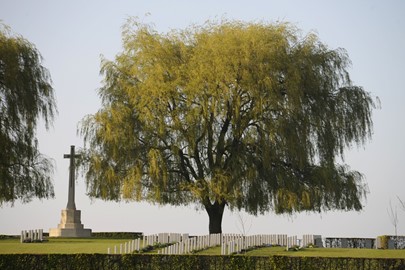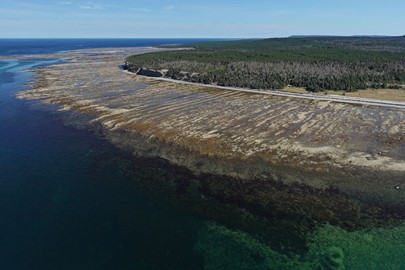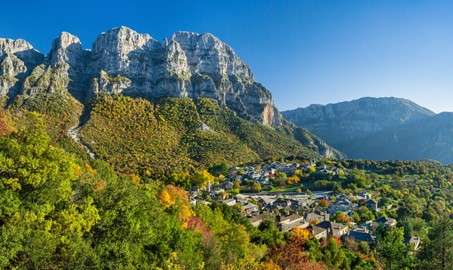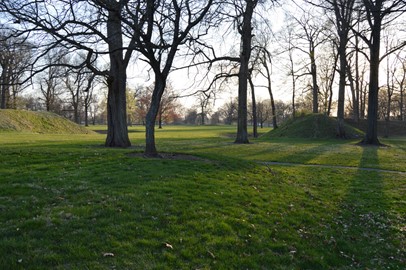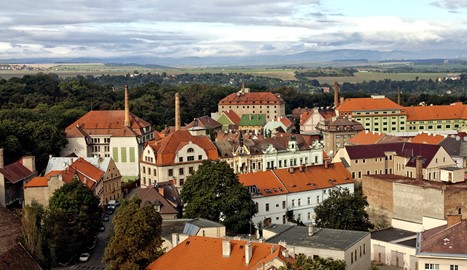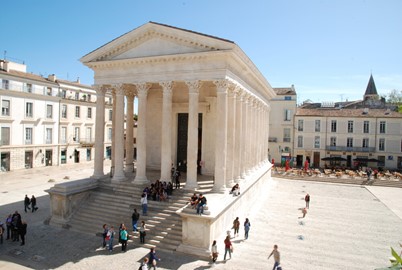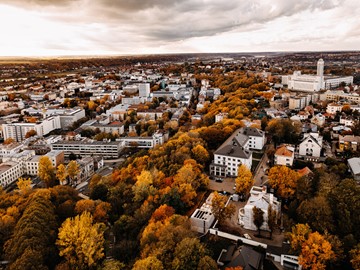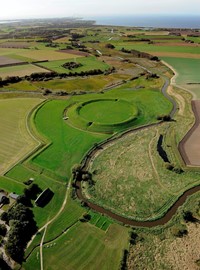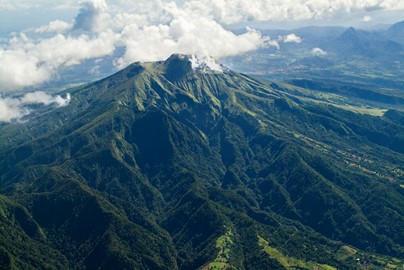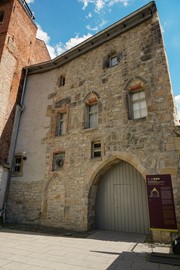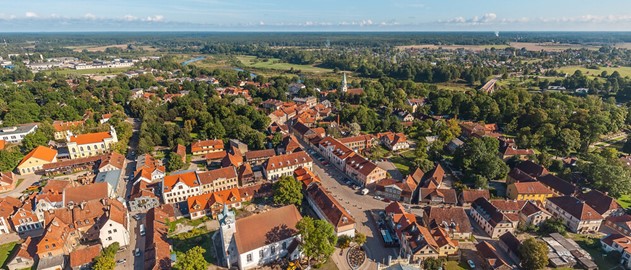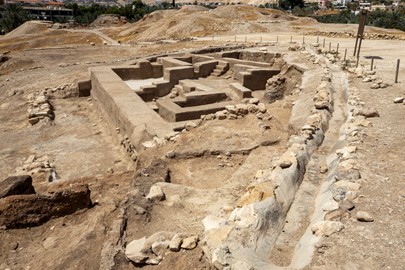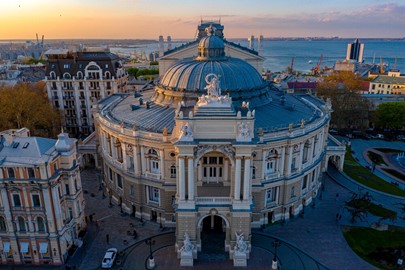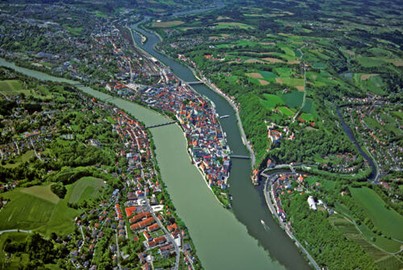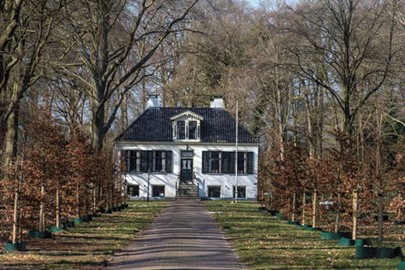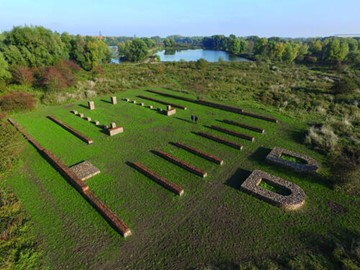region :: europe and north america
Funerary and memory sites of the First World War
This transnational serial property encompasses sites along the First World War Western Front, where war was fought between the German and the Allied forces between 1914 and 1918. Located between the north of Belgium and the east of France, the component parts of the property vary in scale from large necropolises, holding the remains of tens of thousands of soldiers of several nationalities, to tiny and simpler cemeteries, and single memorials. The sites include different military cemeteries, battlefield bur... Read More
Anticosti
Situated on the island of Anticosti, the largest island in Quebec, this property is the most complete and best preserved palaeontological record of the first mass extinction of animal life, 447-437 million years ago. It contains the best preserved fossil record of marine life covering 10 million years of Earth history. The abundance, diversity, and exquisite preservation of the fossils are exceptional and allow for world-class scientific work. Thousands of large bedding surfaces allow the observation and st... Read More
Zagori
Located in a remote rural landscape in northwestern Greece, small stone villages known as Zagorochoria extend along the western slopes of the northern part of the Pindus mountain range. These traditional villages, typically organized around a central square containing a plane tree and surrounded by sacred forests maintained by local communities, showcase a traditional architecture adapted to the mountain topography. A network of stone-arched bridges, stone cobbled paths, and stone staircases linking the vil... Read More
Evaporitic Karst and Caves
This serial property is an unusually well-preserved and extensive epigenic gypsum karst terrain. It includes a very high density of caves: over 900 caves in a relatively small area, with over 100 km of caves in total. It is the first and the best studied evaporitic karst in the world, with academic work beginning in the 16th century. It also includes some of the deepest gypsum caves in existence, reaching 265 meters below the surface.
Eisinga Planetarium
Built between 1774 and 1781, this property is a moving mechanical scale model of the solar system as it was known at the time. Conceived and built by an ordinary citizen – the wool manufacturer Eise Eisinga – the model is built into the ceiling and south wall of the former living room/bedroom of its creator. Powered by one single pendulum clock, it provides a realistic image of the positions of the Sun, the Moon, the Earth and five other planets (Mercury, Venus, Mars, Jupiter and Saturn). The planets revolv... Read More
Wooden Hypostyle Mosques
This serial property is comprised of five hypostyle mosques built in Anatolia between the late 13th and mid-14th centuries, each located in a different province of present-day Türkiye. The unusual structural system of the mosques combines an exterior building envelope built of masonry with multiple rows of wooden interior columns (“hypostyle”) that support a flat wooden ceiling and the roof. These mosques are known for the skilful woodcarving and handiwork used in their structures, architectural fittings, a... Read More
Hopewell Ceremonial Earthworks
This property is a series of eight monumental earthen enclosure complexes built between 2,000 and 1,600 years ago along the central tributaries of the Ohio River. They are the most representative surviving expressions of the Indigenous tradition now referred to as the Hopewell culture. Their scale and complexity are evidenced in precise geometric figures as well as hilltops sculpted to enclose vast, level plazas. There are alignments with the cycles of the Sun and the far more complex cycles of the Moon. Th... Read More
Khinalig
This cultural landscape is comprised of the high-mountain Khinalig village in northern Azerbaijan, high-altitude summer pastures and agricultural terraces in the Greater Caucasus Mountains, winter pastures in the lowland plains in central Azerbaijan, and the connecting 200-kilometre-long seasonal transhumance route called Köç Yolu (“Migration Route”). The village of Khinalig is home to the semi-nomadic Khinalig people, whose culture and lifestyle are defined by the seasonal migration between summer and wint... Read More
Žatec
This cultural landscape has been shaped for centuries by the living tradition of cultivating and trading the world’s most renowned hop variety, used in beer production around the globe. The property includes particularly fertile hop fields near the river Ohře that have been farmed continuously for hundreds of years, as well as historic villages and buildings used for processing hops. Urban elements of the property include the medieval centre of Žatec and its 19th to 20th century industrial extension, kn... Read More
Maison Carrée of Nîmes
Erected in the 1st century CE in the Roman colony of Nemausus – today’s Nîmes in France – the Maison Carrée is an early example of a Roman temple associated with imperial worship in the provinces of Rome. Dedicated to the prematurely deceased heirs of Augustus, the Princes of Youth, this edifice fostered Rome’s control over its conquered territory while symbolically announcing the allegiance of the population of the city of Nemausus to the dynastic line of Augustus. The architecture and elaborate decora... Read More
Modernist Kaunas
This property testifies to the rapid urbanization that transformed the provincial town of Kaunas into a modern city that became Lithuania’s provisional capital between the First and Second World Wars. Its community-driven transformation of an urban landscape was adapted from an earlier town layout. The quality of modern Kaunas was manifested through the spatial organization of the Naujamiestis (New Town) and Žaliakalnis (Green Hill) areas, and in public buildings, urban spaces and residences constructed dur... Read More
Astronomical Observatories of Kazan Federal University
The property is comprised of two component parts: one in the historical centre of Kazan and the other in a forested suburban area west of the city. The Kazan City Astronomical Observatory, built in 1837, is located on the University campus and the building is characterized by a semi-circular façade and three towers with domes built to house astronomical instruments. The suburban Engelhardt Astronomical Observatory includes structures for sky observations and residential buildings, all located within a park.... Read More
Talayotic Menorca
Located on the island of Menorca in the western Mediterranean Sea, these archaeological sites are situated in agro-pastoral landscapes. A testimony to the occupation of the island by prehistoric communities, these sites display a diversity of prehistoric settlements and burial places. The materials, forms and locations of structures dating from the Bronze Age (1600 BCE) to the Late Iron Age (123 BCE) show the evolution of a “cyclopean” architecture built with very large blocks of stone. Astronomical orienta... Read More
Gordion
Located in an open rural landscape, the archaeological site of Gordion is a multi-layered ancient settlement, encompassing the remains of the ancient capital of Phrygia, an Iron Age independent kingdom. The key elements of this archaeological site include the Citadel Mound, the Lower Town, the Outer Town and Fortifications, and several burial mounds and tumuli with their surrounding landscape. Archaeological excavations and research have revealed a wealth of remains that document construction techniques, sp... Read More
Tr’ondek Klondike
Located along the Yukon River in the sub-arctic region of Northwest Canada, Tr’ondëk-Klondike lies within the homeland of the Tr’ondëk Hwëch’in First Nation. It contains archaeological and historic sources that reflect Indigenous people’s adaptation to unprecedented changes caused by the Klondike Gold Rush at the end of the 19th century. The series illustrates different aspects of the colonization of this area, including sites of exchange between the Indigenous population and the colonists, and sites demons... Read More
Viking Age Ring Fortresses
These five archaeological sites comprise a system of monumental ring-shaped Viking-Age fortresses sharing a uniform geometric design. Constructed between about 970 and 980 CE, the fortresses at Aggersborg, Fyrkat, Nonnebakken, Trelleborg and Borgring were positioned strategically near important land and sea routes, and each made use of the natural topography of their surrounding landscape for defensive purposes. They are an emblematic demonstration of the centralized power of the Jelling Dynasty, and a test... Read More
Volcanoes and Forests of Northern Martinique
The global significance of Mount Pelée and Pitons du Carbet is based on its representation of volcanic features, materials and processes. The 1902-1905 eruption is considered a key event for the history of volcanology causing a dramatic impact on St. Pierre town, resulting in a tragic loss of life, and a legacy that remains part of the culture of Martinique. The serial property is home to globally threatened species such as the Martinique Volcano Frog (Allobates chalcopis), the Lacépède’s Ground Snake ... Read More
Jewish Medieval Heritage of Erfurt
Located in the medieval historic centre of Erfurt, the capital city of Thuringia, the property comprises three monuments: the Old Synagogue, the Mikveh, and the Stone House. They illustrate the life of the local Jewish community and its coexistence with a Christian majority in Central Europe during the Middle Ages, between the end of the 11th and the mid-14th century.
Kuldiga
Located in the western part of Latvia, the town of Kuldīga is an exceptionally well-preserved example of a traditional urban settlement, which developed from a small medieval hamlet into an important administrative centre of the Duchy of Courland and Semigallia between the 16th and 18th centuries. The town structure of Kuldīga has largely retained the street layout of that period, and includes traditional log architecture as well as foreign-influenced styles that illustrate the rich exchange between local a... Read More
Jericho
Located in the Jordan Valley, the property is an oval-shaped tell, or mound, that contains the prehistorical deposits of human activity, and includes the adjacent perennial spring of ‘Ain es-Sultan. A permanent settlement had emerged here by the 9th to 8th millennium BC, due to the fertile soil of the oasis and easy access to water. Skulls and statues found on the site testify to cultic practices amongst the Neolithic populations living there, and the Early Bronze Age archaeological material shows signs of ... Read More
Odesa
The Historic Center of Odesa, part of the Black Sea port city developed on the site of Khadzhybei, is a densely built-up area, planned according to classicism canons, characterized by two- to four-storey buildings and wide perpendicular streets lined with trees. Historic buildings reflect the rapid economic development of the city in the 19th and early 20th centuries. The site includes theatres, bridges, monuments, religious buildings, schools, private palaces and tenement houses, clubs, hotels, banks, shop... Read More
Great Spa Towns of Europe
This transnational property comprises 11 towns, located in seven European countries: Baden bei Wien (Austria); Spa (Belgium); Františkovy Lázně (Czechia); Karlovy Vary (Czechia); Mariánské Lázně (Czechia); Vichy (France); Bad Ems (Germany); Baden-Baden (Germany); Bad Kissingen (Germany); Montecatini Terme (Italy); and City of Bath (United Kingdom). All of these towns developed around natural mineral water springs. They bear witness to the international European spa culture that developed from the ear... Read More
Danube Limes
It covers almost 600km of the whole Roman Empire’s Danube frontier. The property formed part of the much large frontier of the Roman Empire that encircled the Mediterranean Sea. The Danube Limes (Western Segment) reflects the specificities of this part of the Roman Frontier through the selection of sites that represent key elements from road, legionary fortresses and their associated settlements to small forts and temporary camps, and the way these structures relate to local topography.
Colonies of Benevolence
The transnational serial property encompasses four settlements; cultural landscapes with one colony in Belgium and three in The Netherlands. Together they bear witness to a 19th century experiment in social reform, an effort to alleviate urban poverty by establishing agricultural colonies in remote locations. Established in 1818, Frederiksoord (the Netherlands) is the earliest of these colonies and home to the original headquarters of the Society of Benevolence, an association which aimed to reduce poverty ... Read More
Lower German Limes
Following the left bank of the Lower Rhine River for approximately 400 km from the Rhenish Massif in Germany to the North Sea coast in the Netherlands, the transnational property consist of 102 components from one section of the frontiers of the Roman Empire, which in the 2nd century CE, stretched across Europe, the Near East, and North Africa, over 7,500 km. The property comprises military and civilian sites and infrastructure that marked the edge of Lower Germany from the 1st to 5th centuries CE. Archaeol... Read More
